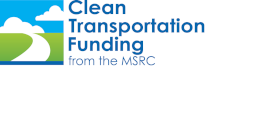
This year we celebrate the 50th anniversary of the federal Clean Air Act. Passed in 1970, the law was enacted to curb the impacts of acid rain, tackle the intense smog pollution that was blanketing many American cities, and address other air quality issues. Although the CAA, coupled with states implementing their own air quality regulations, has done much to improve air quality over the last half-century, there is much work left to be done so that everyone can breathe healthy air. The American Lung Association’s “2020 State of the Air” Report shows Southern California still has some of the dirtiest air in the country.
The report analyzed ozone and particle pollution data from 2016 through 2018 and found that almost half of the U.S. population – 150 million people – lived in areas with polluted air. In California, this timeframe also saw three of the five hottest years on record and five of the most destructive wildfires in the state’s history, exacerbating the effects of ozone and particle pollution. Ozone pollution contributes to smog, which is a respiratory irritant that can cause shortness of breath, trigger asthma attacks and negatively impact overall health. Particulate matter (PM) pollution, also known as PM2.5, refers to microscopic particles that can lodge deep into lung tissue causing breathing problems and asthma attacks. These particles can even enter the bloodstream, contributing to heart attacks, strokes, and lung cancer.

California has made impressive strides in improving its air quality, although the impacts of climate change and the recent catastrophic wildfire seasons have made progress more challenging. Nearly all Californians (98 percent) live in counties with failing air quality scores, according to the report. It leads the country as the state with the highest number of cities with unhealthful ozone levels, with 10 of the 25 most polluted areas in the US. In fact, seven of the 10 most ozone-polluted cities are in California – the Los Angeles-Long Beach region (including the Inland Empire) retains the title of the worst in the nation, as it has for the last two decades. California also is home to six of the 10 cities most polluted by annual PM levels – Bakersfield is number 1 – and five of the cities most polluted by unhealthy particle pollution days – the Fresno-Madera-Hanford area is number 1.
In the South Coast Air District, Los Angeles, Orange, Riverside, and San Bernardino Counties all received failing grades for high ozone days. The four-county region experienced nine or more days of unhealthy air that exceeded the 70 parts per billion 8-hour ozone standard, placing them in nonattainment, and giving this area the distinction of the most polluted city for ozone in the nation. All four counties received failing grades for the 24-hour PM standard, as well as the annual PM standard, with the exception of Orange County which received a passing grade. Nationally, the region was ranked number six for short-term PM pollution and number four for annual PM pollution.
These results demonstrate why the MSRC’s work to fund projects that reduce emissions from motor vehicles continues to be vital to helping the South Coast Air District meet its air quality goals. As the transportation sector contributes to 40 percent of the state’s greenhouse gas emissions, and approximately 80 percent of the NOx pollutants that form ozone, and 90 percent of the PM, the South Coast region may continue to lead the nation in poor air quality without continued strategic investments in clean air projects that reduce transportation emissions.
